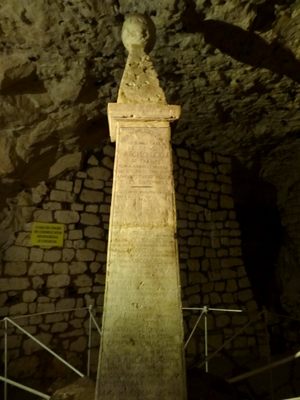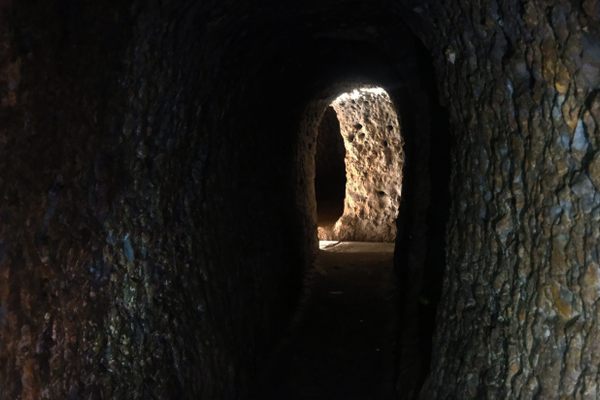About
Located in the north of France, the charming country village of Naours has a population of about 1200. Just east of the town, though, carved deep into a wooded limestone plateau, are a series of tunnels, rooms, and passageways that once housed almost three times that many people.
The underground portion of Naours began as a quarry in antiquity that was steadily enlarged over successive centuries. The empty subterranean chambers gave area residents a convenient place to store goods and take shelter from the elements, and to hide from raiders and roving armies looking for supplies. By the 17th century, thanks to the rampant destruction of the Thirty Years' War, the underground city had a large and fairly well-settled contingent of residents.
Consisting of 300 rooms and 28 galleries, the Cité souterraine de Naours hosted roughly 3000 people at its height. Along with these human inhabitants, there were also spaces for keeping livestock, as well as three chapels, multiple town squares, and a bakery with working ovens. The chimneys from these ovens and from any other fires underground were carefully routed through the existing structures aboveground to hide the existence of the daily life taking place 22 meters (72 feet) below ground.
As Western Europe stabilized and hiding in caves for long periods of time became less necessary, the existence of this underground complex was forgotten until it was rediscovered in 1887. True to its past form, the hidden network of chambers was a popular sightseeing attraction among World War I soldiers on the Western front, today boasting the highest concentration of graffiti from that conflict yet discovered. It was also used as a headquarters by occupying Nazi forces in World War II. The Cité souterraine de Naours is today one of the largest tunnel networks in northern France.
Related Tags
Published
November 8, 2016























































